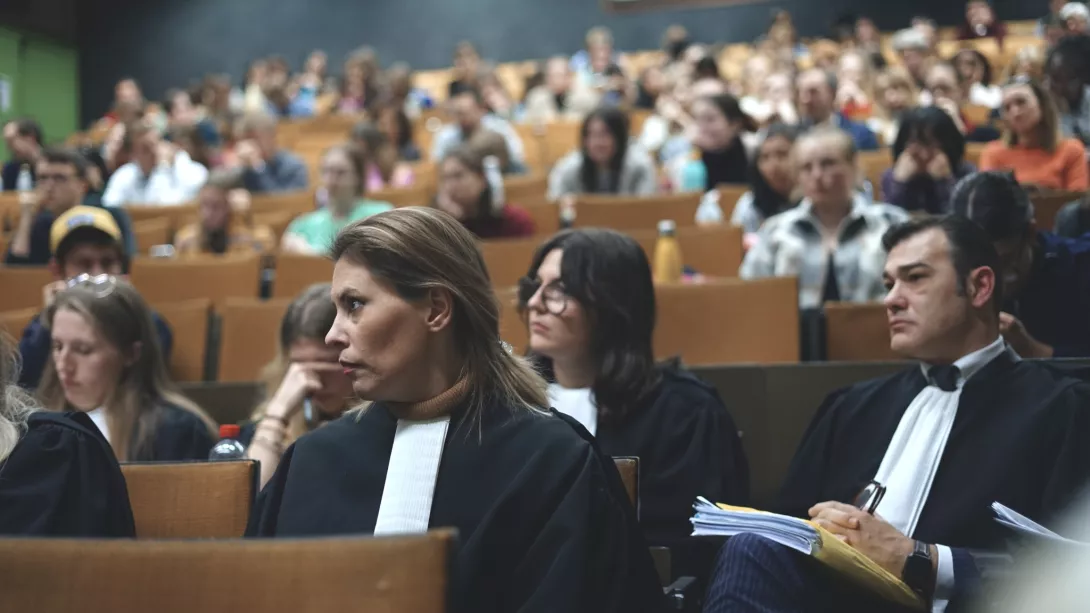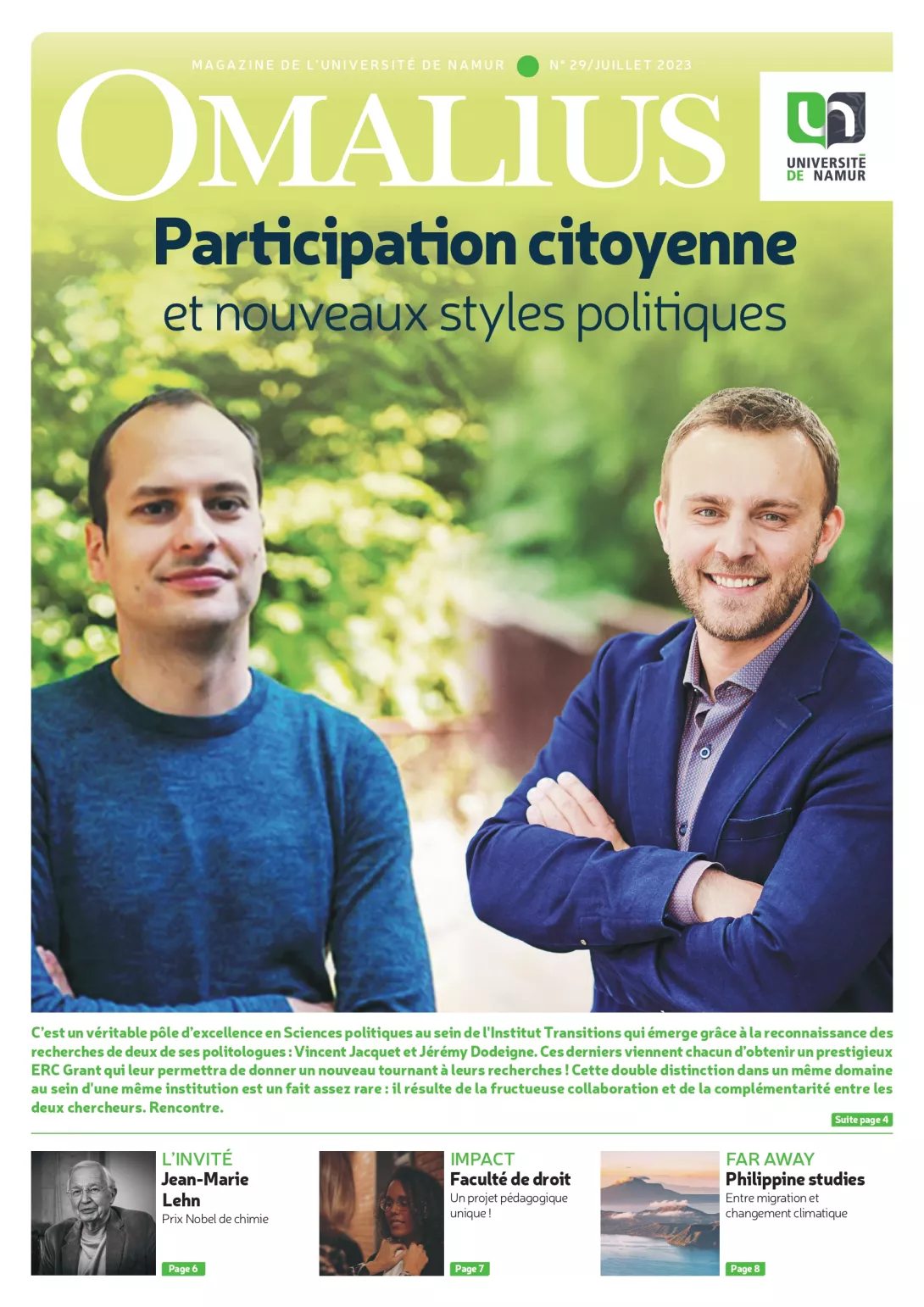
This article was produced for the "Tomorrow learn" section of Omalius magazine #29, July 2023.
"Childhood and migration"
Such was the theme of this first edition of the Fil Rouge de la Faculté de droit. The project's starting point was the "Mawda affair", named after the 2-year-old daughter of Kurdish migrants, who died in May 2018 as a result of police gunfire, while the van in which she was travelling with her parents and around twenty migrants was being chased by the police. To date, this tragedy has been the subject of three trials.
Throughout the year, this theme ran through most of the Law School's activities. Meetings with legal professionals, plays, film screenings and debates were all part of the program, allowing students to fully immerse themselves in the world of law. "We're fundamentally convinced that to be a good lawyer, you have to rub shoulders with reality. This can be done through field experience or internships, but you can't experience everything. I think that through reading, social involvement or even the cinema, we can be confronted with certain realities that enable us to complete our legal baggage", explains Élise Defreyne, pedagogical coordinator and one of the project's driving forces.
Multiple educational objectives
To approach the subject in a concrete way, using topical issues, to give concrete expression to the subjects taught, to meet and exchange views with professionals in the field, and to discover their professions: "With the Fil Rouge, students were plunged into practice thanks to concrete cases linked to current events. This experience also enabled students to discover that the law is a (good) tool at the service of values, encouraging them to become committed jurists", explains Marie Amélie Delvaux, professor of judicial law and the project's driving force.
As part of the criminal law course, Fil Rouge took part in a mock trial exercise.Based on a real case involving the reception of migrants, the students were coached to acquire all the qualities required to deliver quality pleadings. Equipped with an introductory notebook listing all the facts and offences alleged, and dressed in a lawyer's gown, they took on the roles of public prosecutor, defense counsel and civil parties for the duration of the trial. "This was a major first, as we brought together students from both the daytime and evening classes," explains Nathalie Colette-Basecqz, professor of criminal law. "This exercise highlighted in a concrete way how law studies can actively contribute to the defense of human rights. We wanted to give meaning to law studies. Here, students have become actors".
From the teaching team's point of view, this approach helped to break down the barriers between different subjects by creating links between each course, thus adopting a cross-disciplinary approach. The aim was also to capitalize on collaboration between law, humanities and language teachers. A sentiment shared by Aude Hansel, English teacher in four UNamur faculties. "Fil Rouge has enabled me to forge links with colleagues in the faculty and to feel genuinely involved in the project," she says. "As a language teacher, I used this theme to demonstrate to students the value of English for lawyers wishing to work in an international context." The result? A revitalized team, and teachers who were able to improve their individual practices through regular exchanges.
"This first Fil Rouge experience proved to be particularly positive, not only in educational terms, but also on a human level, with the collaborative work it generated between students, teachers, legal professionals and players from the associative and cultural worlds", enthuse Marie Amélie Devaux and Élise Defreyne. The event was such a success that it will be repeated next academic year on the theme of harassment in all its facets, encompassing harassment at school, in the workplace, towards minorities... whether physical, moral and/or sexual, and whether it occurs live, by computer or otherwise.
Key numbers
24
speakers
30
events
400
people at the closing event
2000
around €2,000 raised for the EL PASO center for MENA (unaccompanied foreign minors) in Gembloux.
Student testimonials
Thomas Delacuvellerie Ketels, Bac 2 student: Le Fil Rouge was a catalyst for our learning. The many lectures and debates stimulated our critical thinking about the current legal issues surrounding migration. By cutting across all the year's subjects, the Fil Rouge strengthened our overall understanding and our ability to make connections between different disciplines.
Adèle Dubois, a student in Bac 3 with a staggered timetable: The multidisciplinary approach is extremely enriching and highly formative. It gives us a fresh perspective on the subject and makes us more aware of the links that exist between different branches of law. Le Fil Rouge enabled me to look further ahead, and to remember why I decided to follow this course, thanks in particular to the testimonials and contributions of the various professionals involved.
Amani Picci, Bac 3 student: We're lucky to have passionate, committed teachers, and their passion is contagious! What I really appreciated was the opportunity to get to know the other students, especially those on shift work. These moments allowed us to share experiences on a human level, which was very enriching.
Clara Jacquy, Bac 3 student: I was very proud to get involved in a cross-disciplinary legal project. Our teachers often tell us to be active in the law, to get things done and to be daring. I found that these activities and the thinking that went into them were the ideal opportunity to apply their advice at our own level. The law isn't just in our books, it's all around us, and a Fil Rouge makes us aware of this.

Omalius
This article was extracted from issue #29 of the Omalius magazine (July 2023).

